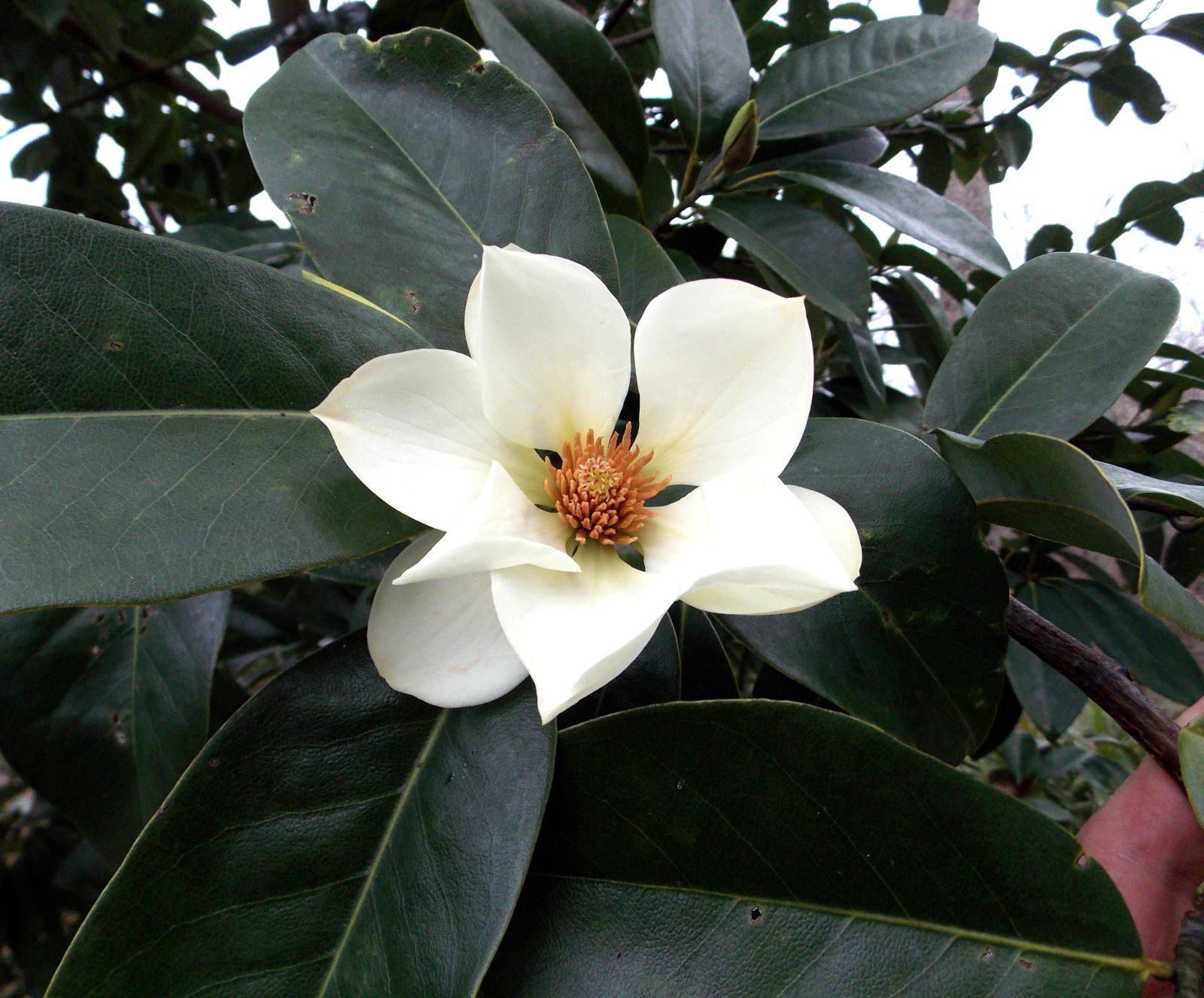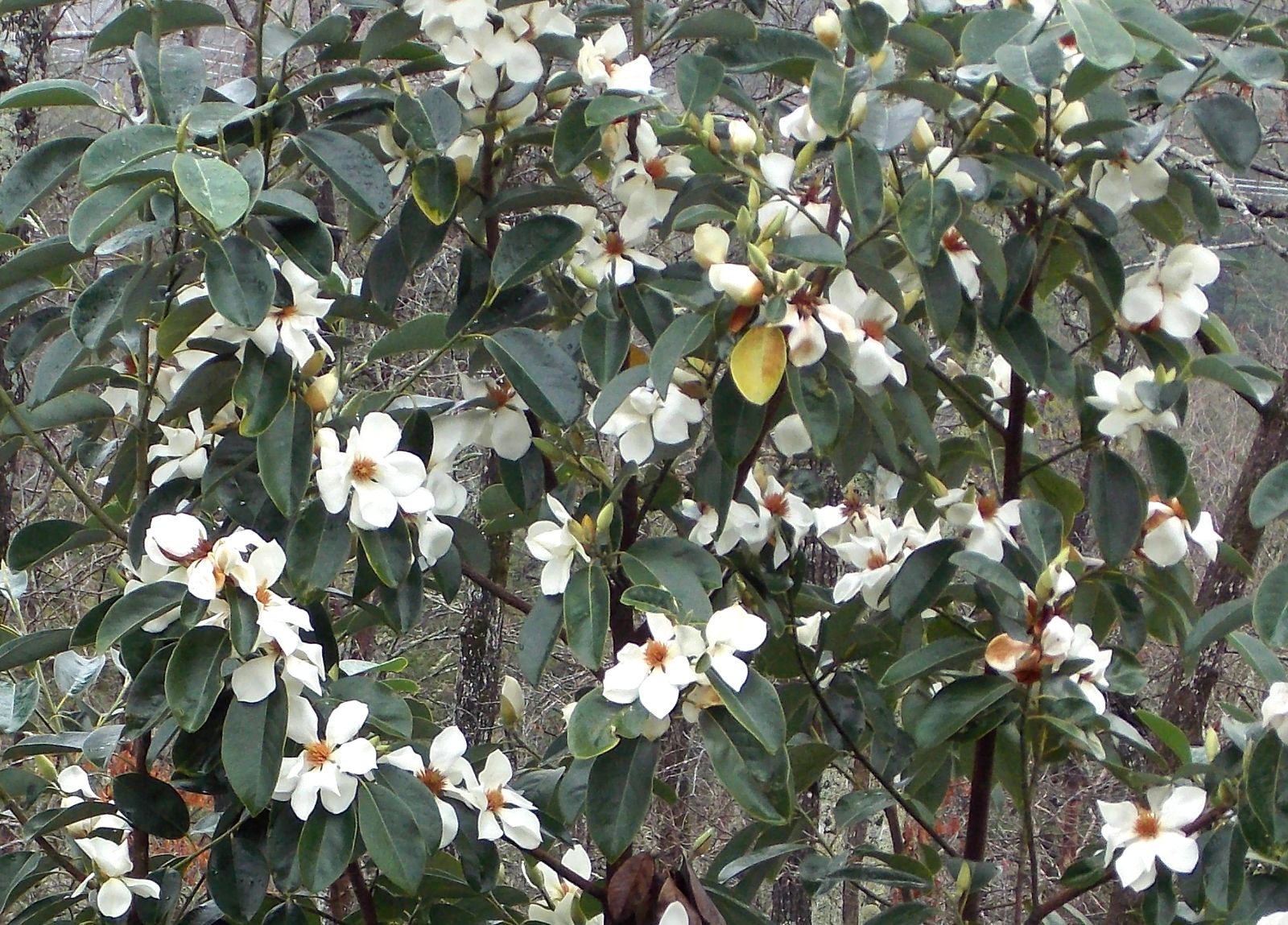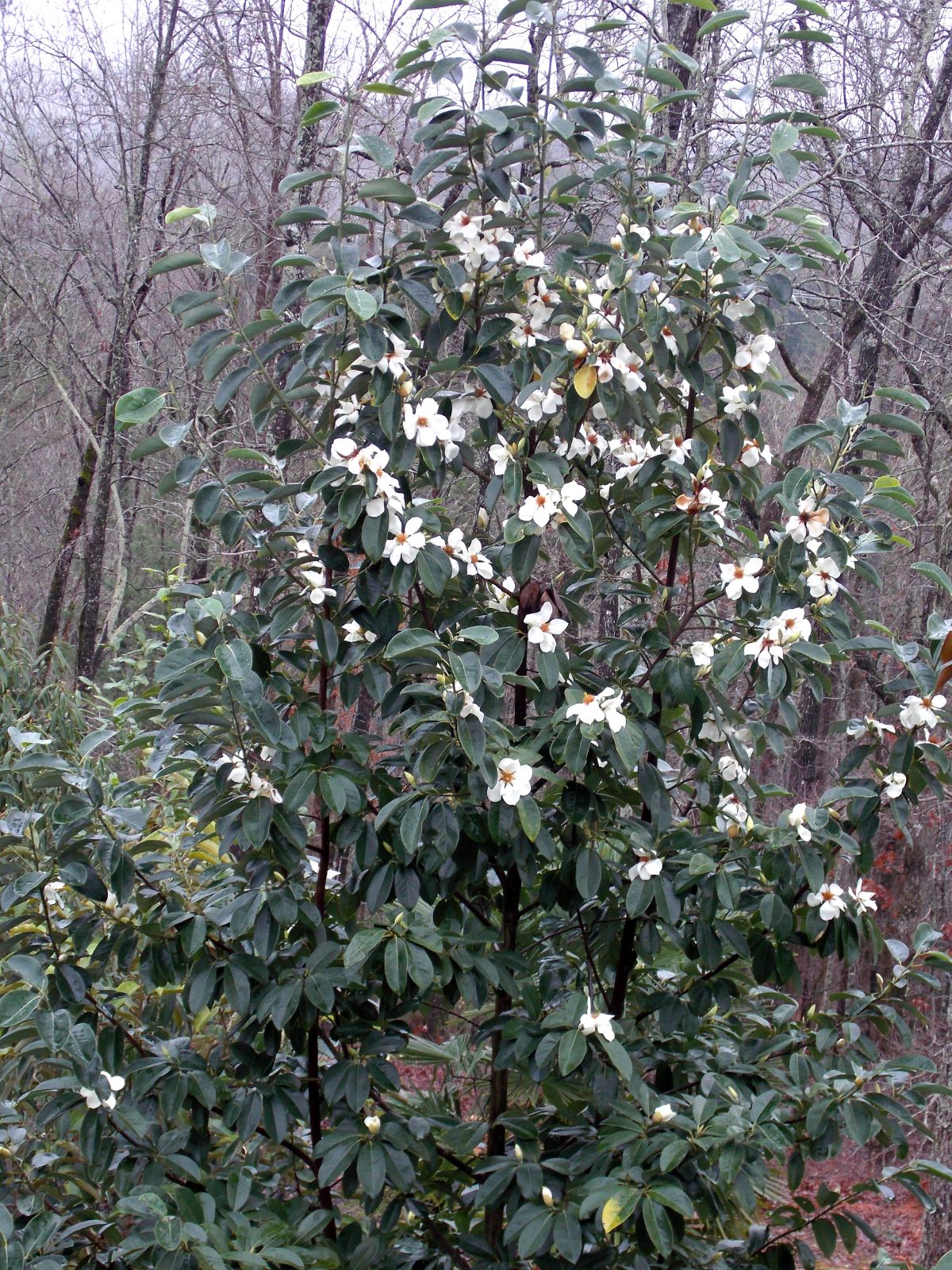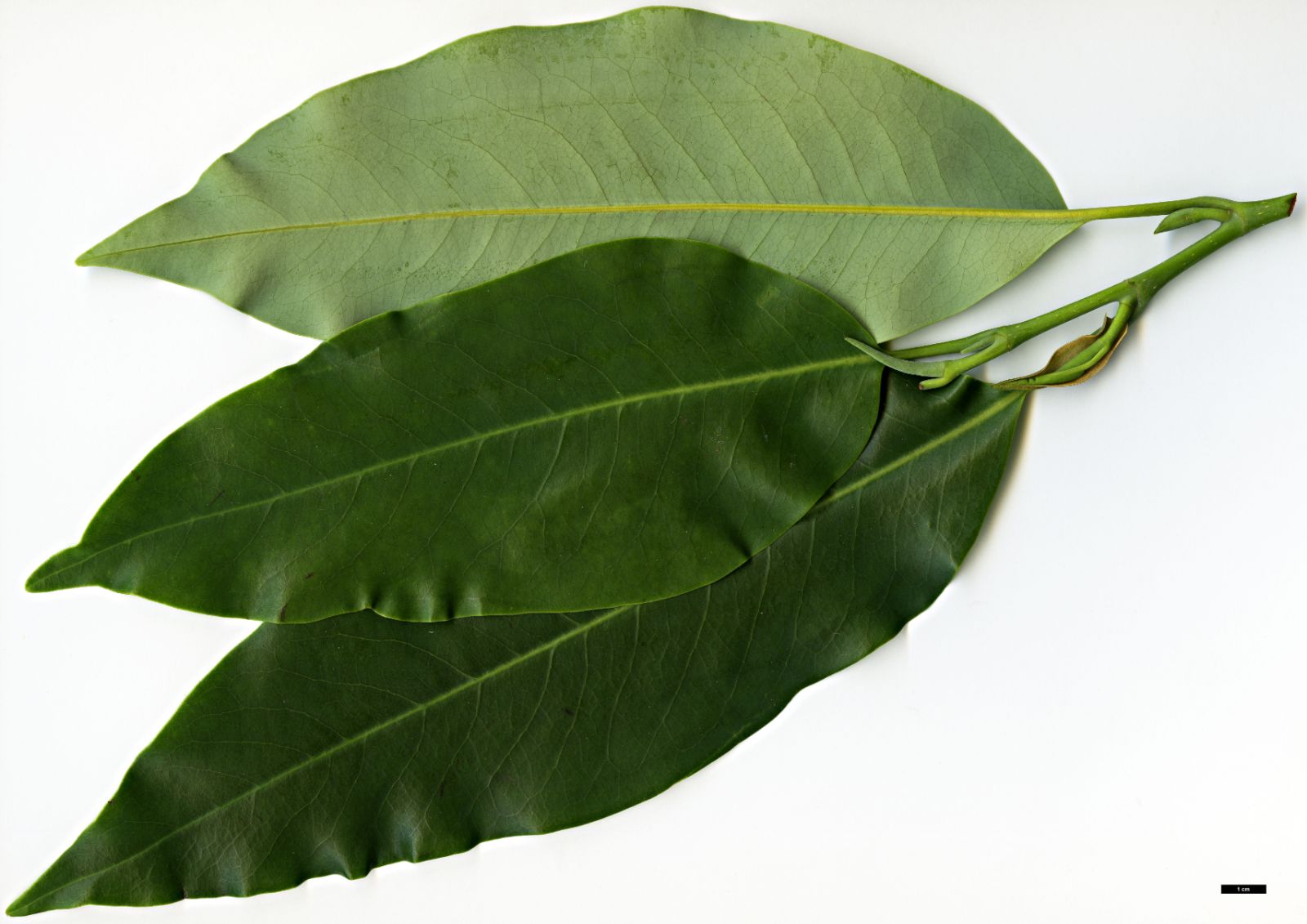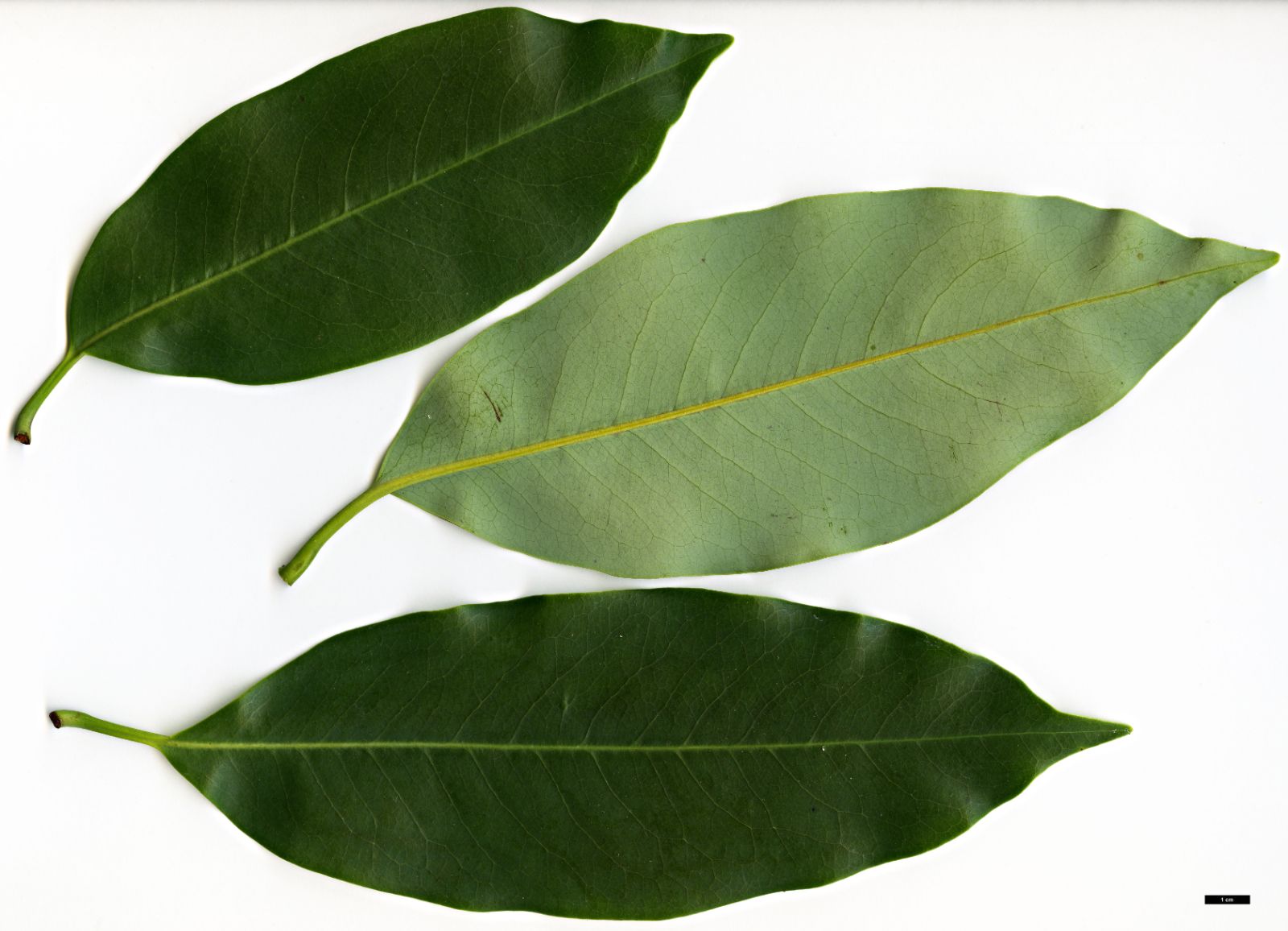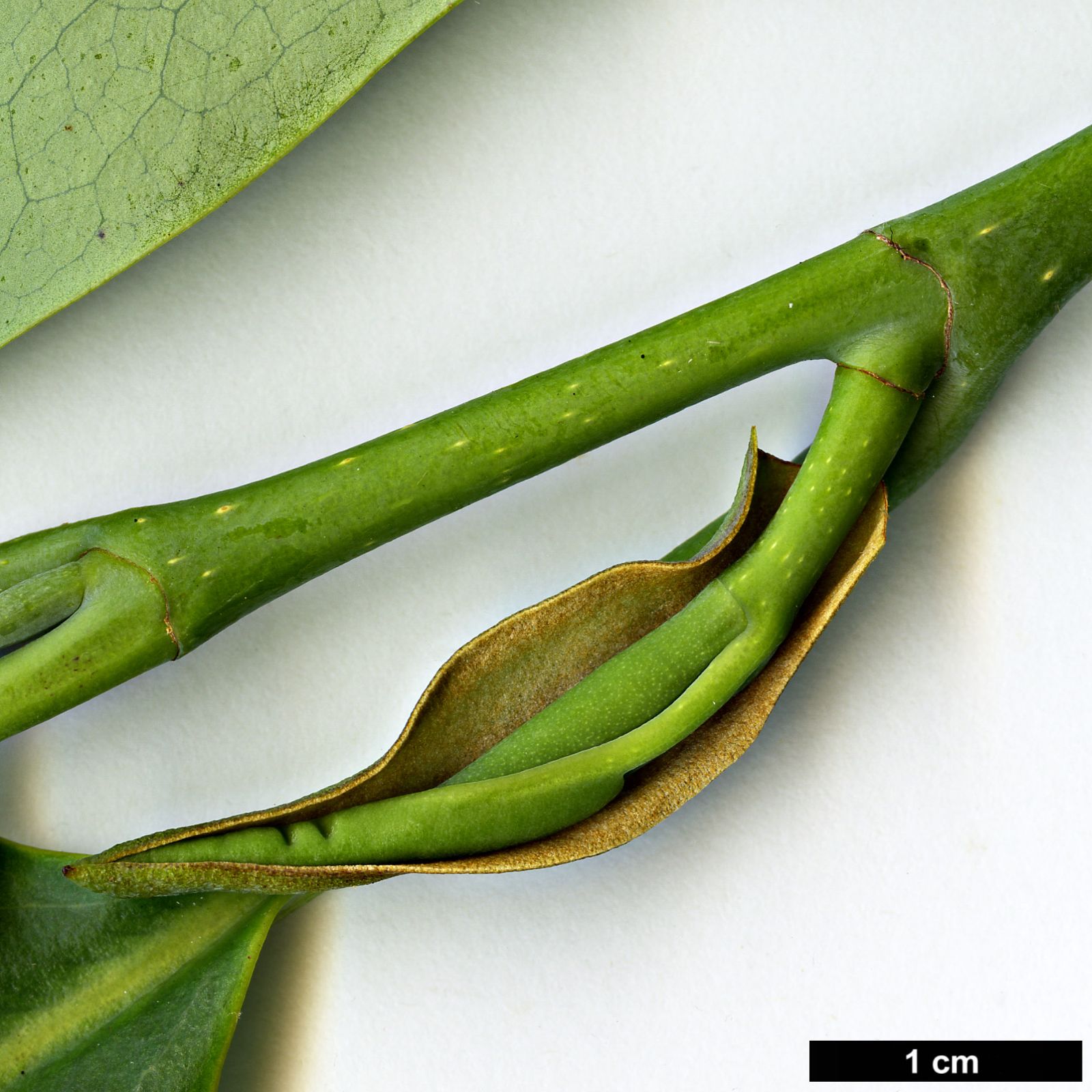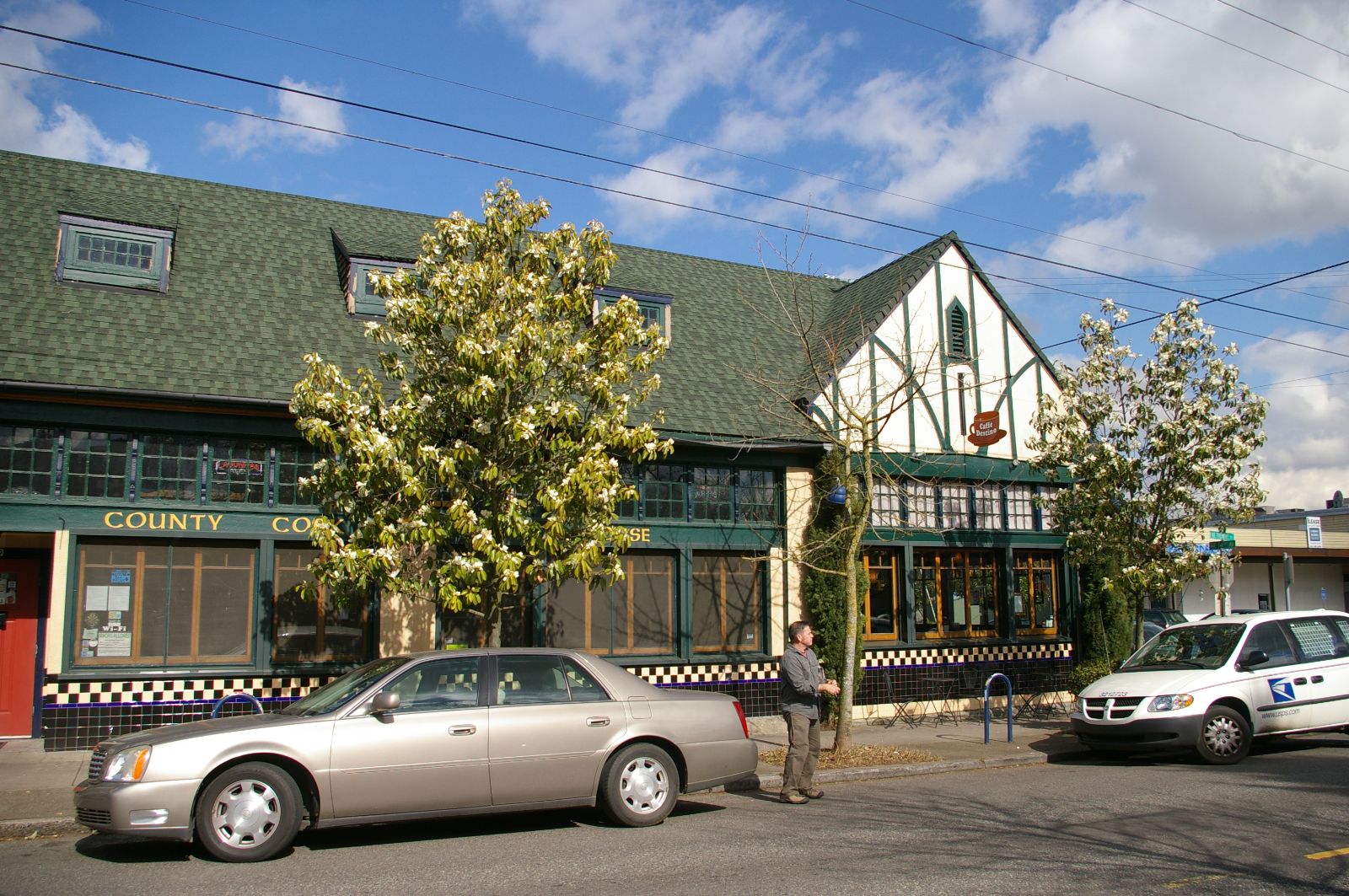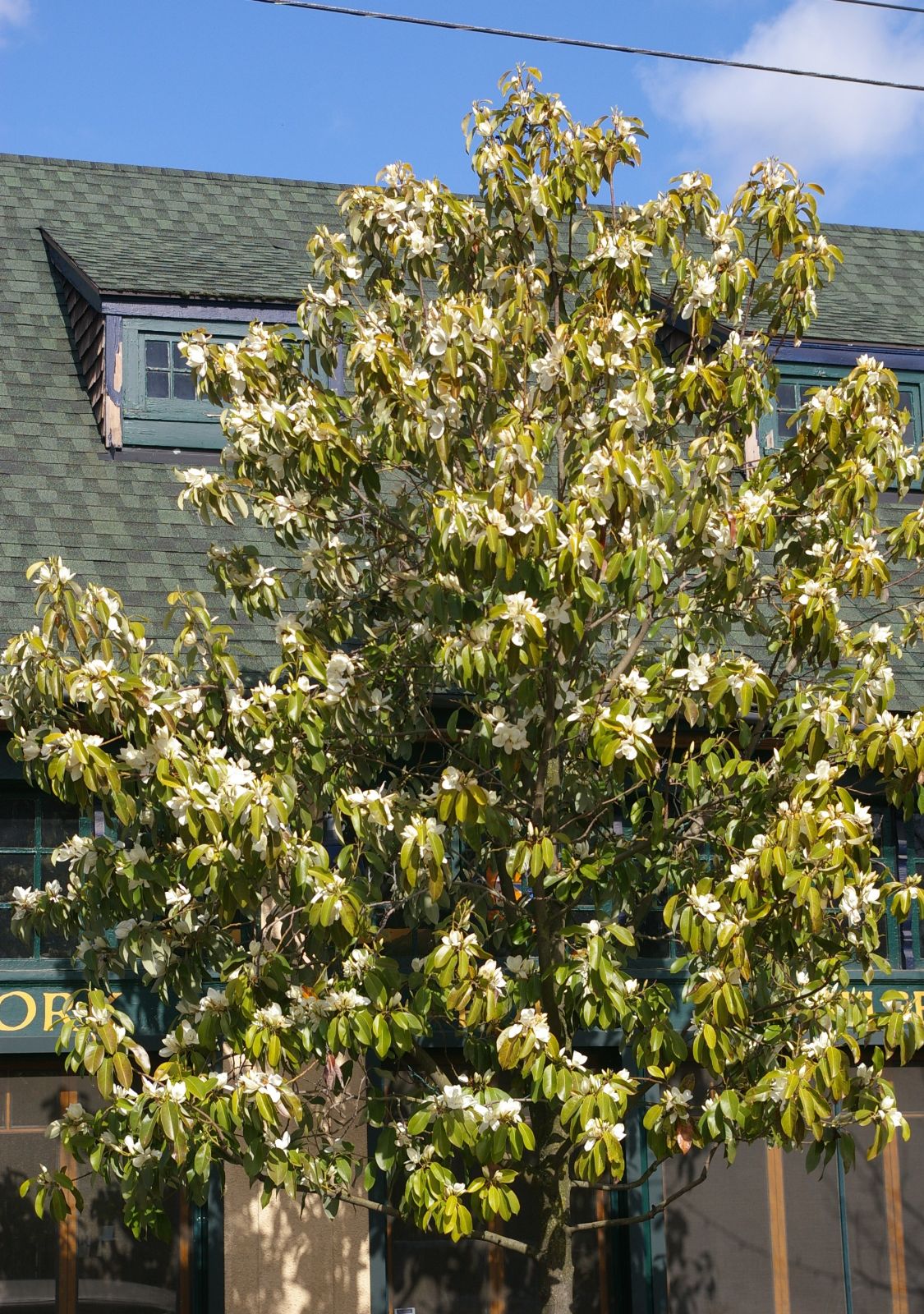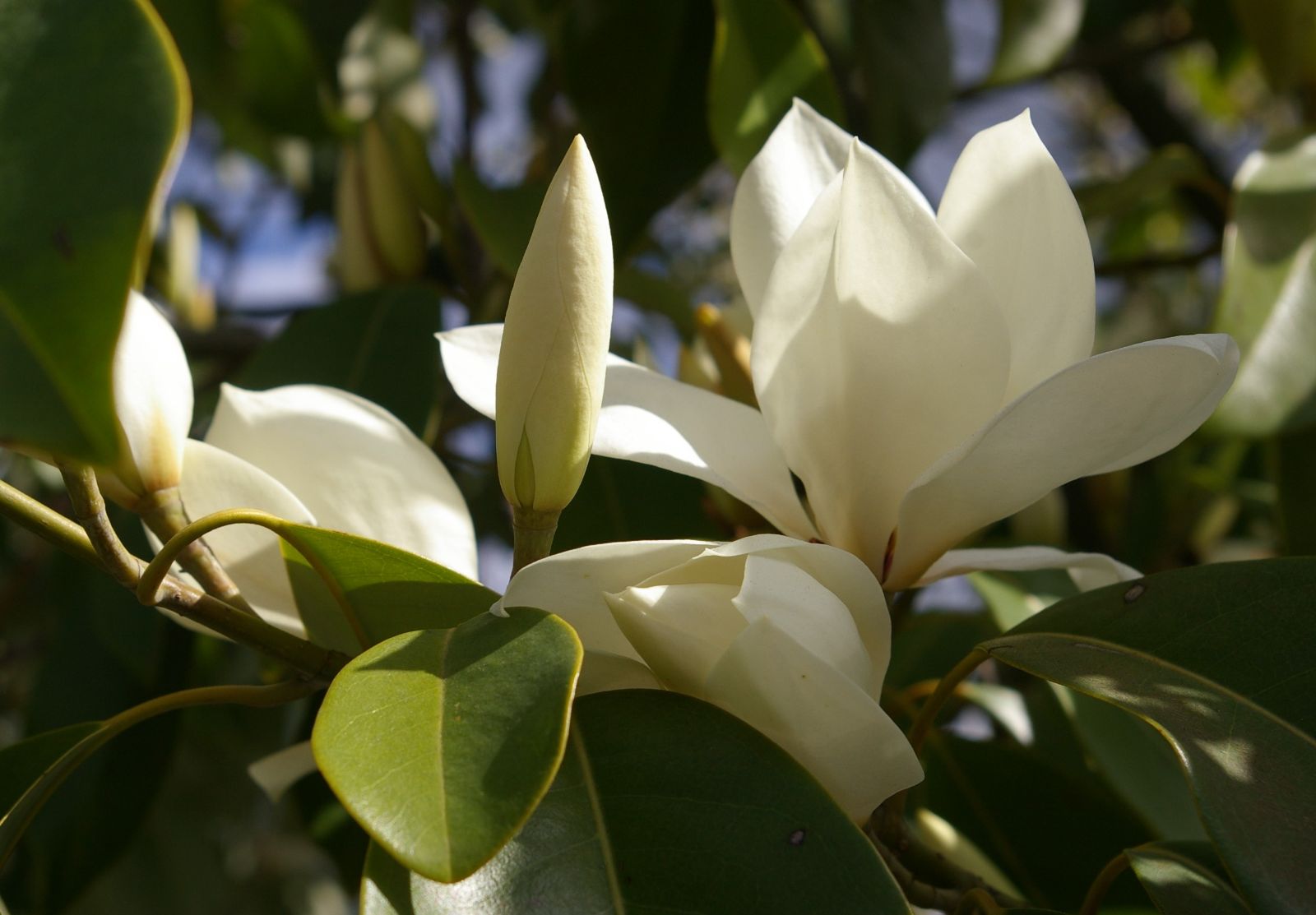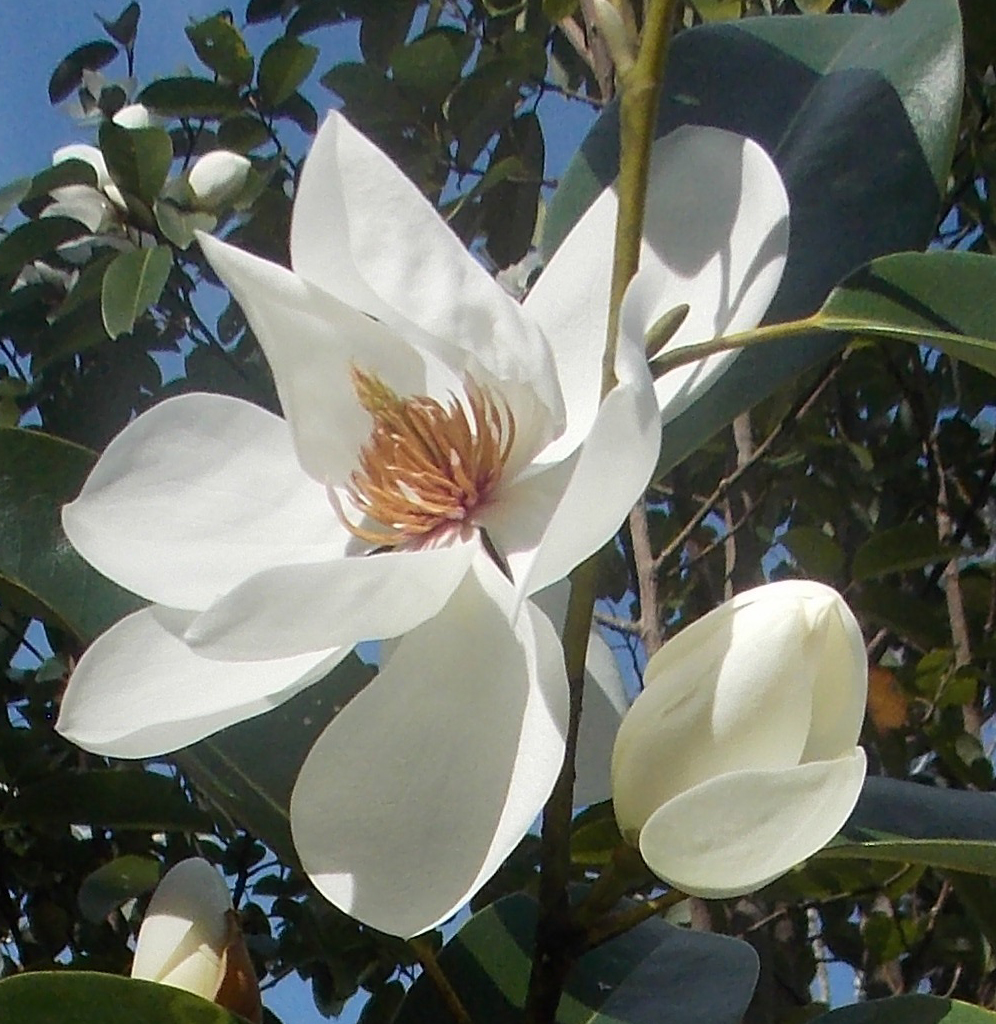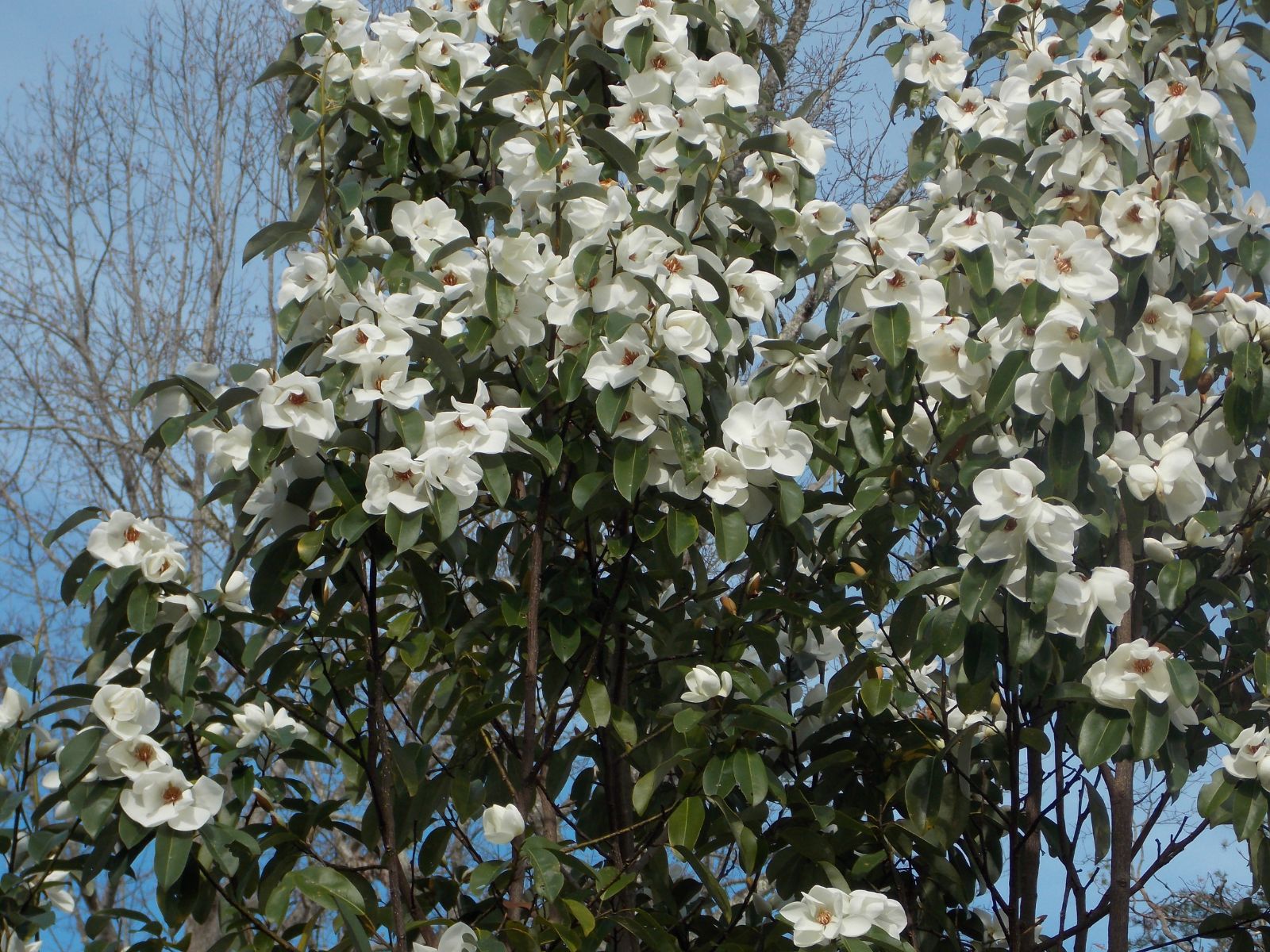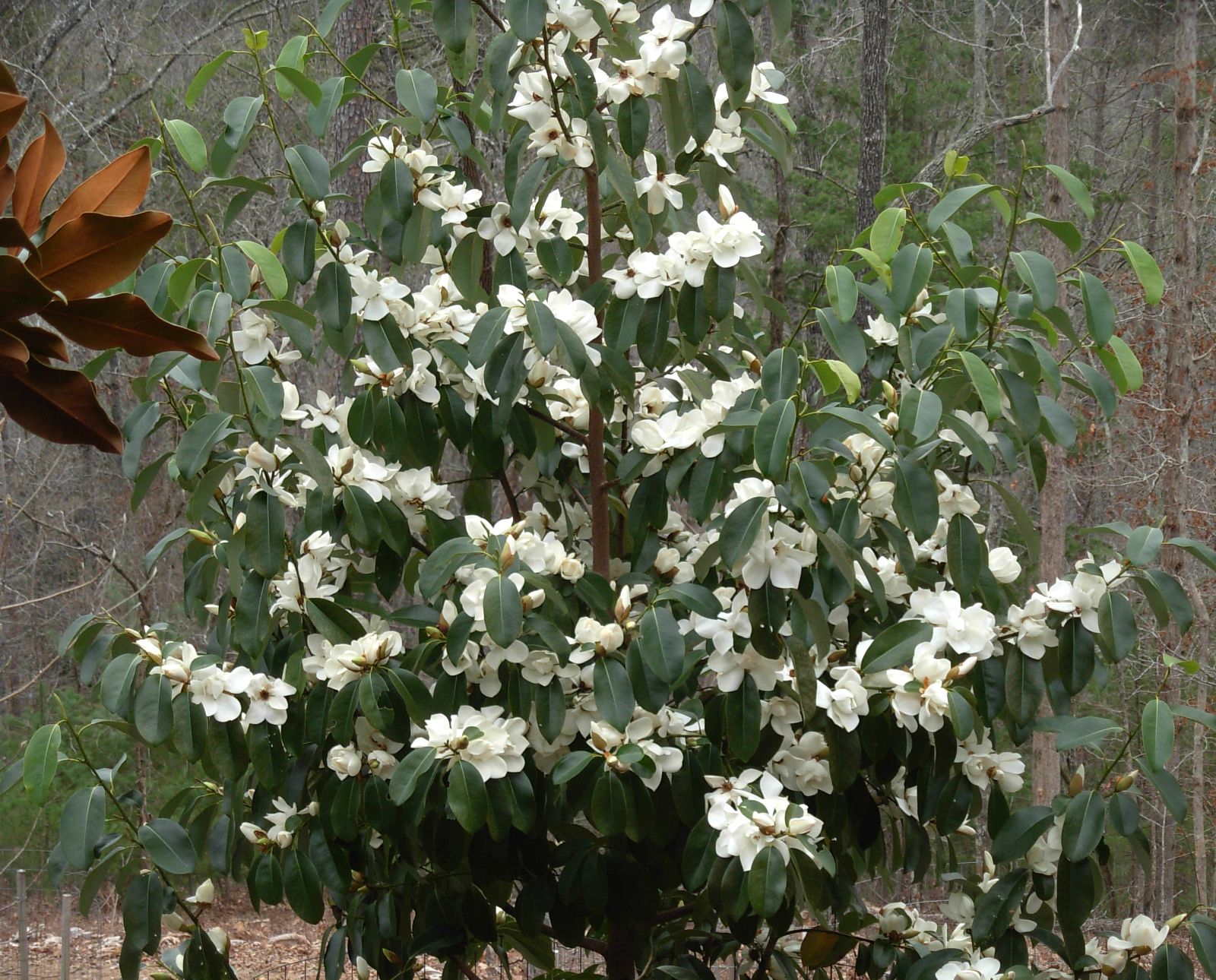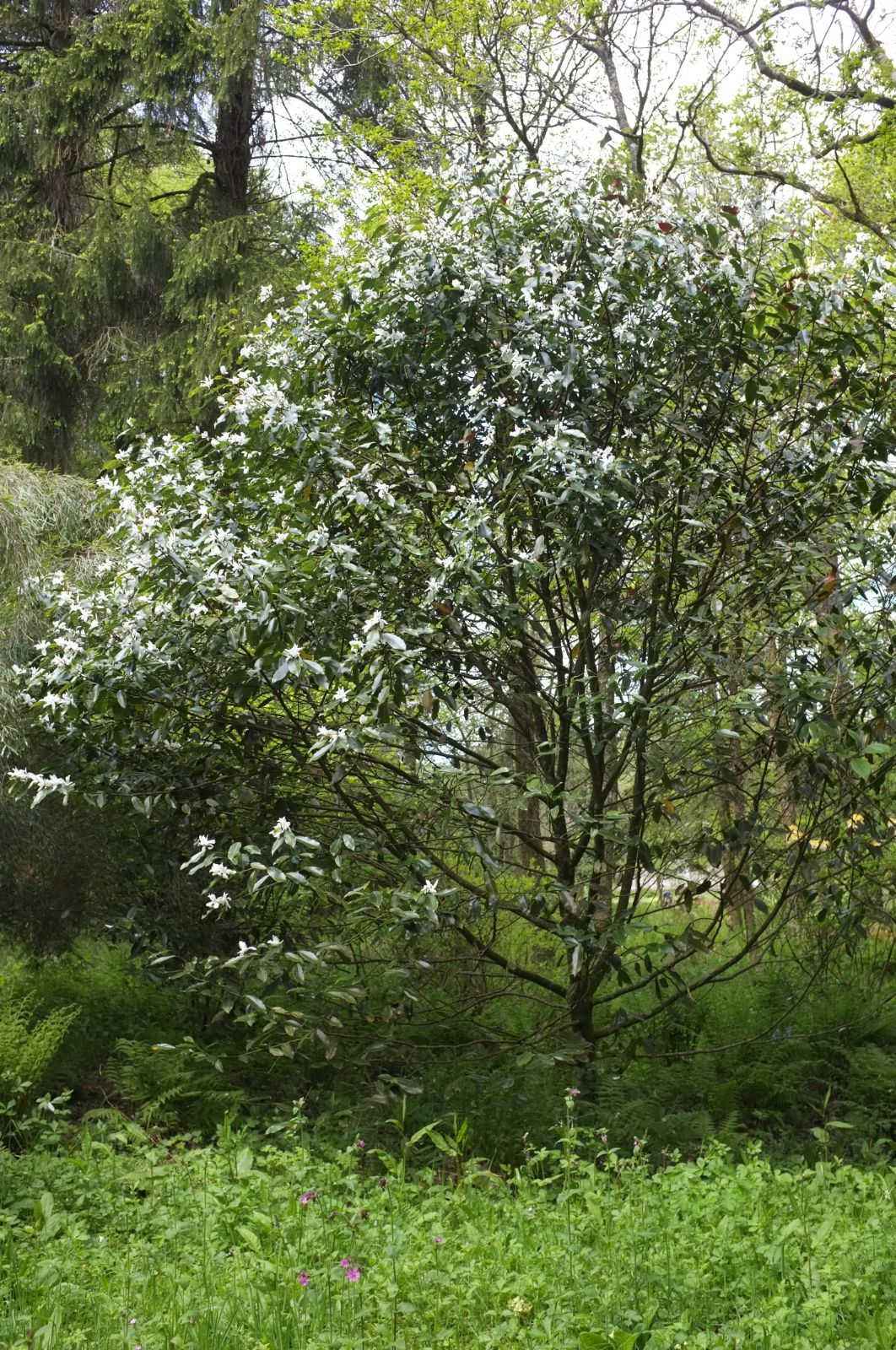Magnolia maudiae
Sponsor
Kindly sponsored by
The Roy Overland Charitable Trust

Credits
Julian Sutton (2022)
Recommended citation
Sutton, J. (2022), 'Magnolia maudiae' from the website Trees and Shrubs Online (treesandshrubsonline.
Genus
- Magnolia
- Section Michelia
Synonyms
- Michelia maudiae Dunn
- Michelia chingii W.C. Cheng
Infraspecifics
Other taxa in genus
- Magnolia acuminata
- Magnolia × alba
- Magnolia amabilis
- Magnolia amoena
- Magnolia aromatica
- Magnolia biondii
- Magnolia × brooklynensis
- Magnolia campbellii
- Magnolia cathcartii
- Magnolia cavaleriei
- Magnolia caveana
- Magnolia champaca
- Magnolia changhungtana
- Magnolia chapensis
- Magnolia compressa
- Magnolia conifera
- Magnolia Cultivars A
- Magnolia Cultivars B
- Magnolia Cultivars C
- Magnolia Cultivars D
- Magnolia Cultivars E
- Magnolia Cultivars F
- Magnolia Cultivars G
- Magnolia Cultivars H–I
- Magnolia Cultivars J
- Magnolia Cultivars K
- Magnolia Cultivars L
- Magnolia Cultivars M
- Magnolia Cultivars N–O
- Magnolia Cultivars P
- Magnolia Cultivars Q–R
- Magnolia Cultivars S
- Magnolia Cultivars T
- Magnolia Cultivars U–V
- Magnolia Cultivars W–Z
- Magnolia cylindrica
- Magnolia dandyi
- Magnolia dawsoniana
- Magnolia de Vos and Kosar hybrids
- Magnolia decidua
- Magnolia delavayi
- Magnolia denudata
- Magnolia doltsopa
- Magnolia duclouxii
- Magnolia ernestii
- Magnolia figo
- Magnolia floribunda
- Magnolia × foggii
- Magnolia fordiana
- Magnolia foveolata
- Magnolia fraseri
- Magnolia fulva
- Magnolia globosa
- Magnolia × gotoburgensis
- Magnolia grandiflora
- Magnolia grandis
- Magnolia Gresham hybrids
- Magnolia guangdongensis
- Magnolia hookeri
- Magnolia insignis
- Magnolia Jury hybrids
- Magnolia × kewensis
- Magnolia kobus
- Magnolia kwangtungensis
- Magnolia laevifolia
- Magnolia lanuginosa
- Magnolia leveilleana
- Magnolia liliiflora
- Magnolia × loebneri
- Magnolia lotungensis
- Magnolia macclurei
- Magnolia macrophylla
- Magnolia martini
- Magnolia nitida
- Magnolia obovata
- Magnolia officinalis
- Magnolia opipara
- Magnolia × proctoriana
- Magnolia × pruhoniciana
- Magnolia rostrata
- Magnolia salicifolia
- Magnolia sapaensis
- Magnolia sargentiana
- Magnolia sieboldii
- Magnolia sinensis
- Magnolia sinica
- Magnolia sinostellata
- Magnolia × soulangeana
- Magnolia sprengeri
- Magnolia stellata
- Magnolia tamaulipana
- Magnolia × thomsoniana
- Magnolia tripetala
- Magnolia × veitchii
- Magnolia virginiana
- Magnolia × wieseneri
- Magnolia wilsonii
- Magnolia xinganensis
- Magnolia yunnanensis
- Magnolia yuyuanensis
- Magnolia zenii
Evergreen tree to 20 m, 0.6 m dbh. Bark pale grey or greyish brown. Branchlets green becoming grey, glabrous. Leaves leathery, oblong-elliptic to rarely ovate-elliptic, 7–18 × 3.5–8.5 cm; both surfaces glabrous, 7–12 secondary veins on each side of the midrib; margins entire; base cuneate to obtuse; apex shortly acuminate; petiole 1–3 cm long, without a stipular scar, stipules glabrous and free from the petiole. Flowers solitary or rarely paired, on axillary shoots, fragrant; brachyblast 1–2.8 cm long with 3 annular bract scars; tepals 9; outer three tepals obovate, clawed at the base, 5–8 cm long, with acute apex; inner tepals gradually narrowing, almost spathulate, apex acute; stamens 1.5–2.2 cm, filaments pale purple, connective exserted to form a 1–2 mm tip; gynoecium stipitate with many carpels. Fruits 7–15 cm long and spicate; ripe carpels ellipsoid, obovoid or ovoid, dull brown and lenticellate, 1–2.5 cm long with a short beak. Flowering February to March, fruiting September to October (China). Diploid 2n=38. (Xia, Liu & Nooteboom 2008; Chen & Nooteboom 1993; Liu et al. 2004).
Distribution China S Anhui, Fujian, Guangdong, Guangxi, Guizhou, Jiangxi, Hunan, S Zhejiang
Habitat Evergreen broadleaved forests, 600–1500 m.
USDA Hardiness Zone 8-9
RHS Hardiness Rating H4
Conservation status Least concern (LC)
Taxonomic note The complex which includes M. maudiae and M. cavaleriei is taxonomically challenging, and requires further work by botanists in the field (R. Figlar pers. comm. 2022). The plant first described as Michelia platypetala Hand.-Mazz. has sometimes been included within Magnolia cavaleriei as var. platypetala (Hand.-Mazz.) N.H. Xia (Xia, Liu & Nooteboom 2008). However, we provisionally treat it as M. maudiae var. platypetala on the advice of Richard Figlar (pers. comm. 2022).
The late 20th century influx of evergreen species from Section Michelia includes many destined to remain trees for the specialist collector, but a few are entering mainstream horticulture. At least in America’s Pacific Northwest, Magnolia maudiae is one of these, combining large, white, heavily fragrant flowers borne from an early age with good bluish-green foliage and a pleasing tree shape, plus tolerance of a wide range of cultural conditions.
This southern Chinese tree was described in 1908 by Kew / Hong Kong botanist Stephen Dunn from specimens collected in Fujian; the specific epithet commemorates his Devonian wife Maud, also a keen botanist and Dunn’s ‘constant companion’ on expeditions in China (Dunn 1908). Very similar to M. cavaleriei, the type var. maudiae stands apart from that and many other michelias by being almost entirely glabrous (although with a hand lens one might spot a few hairs at the tips of the flower buds – Figlar 2005). Additionally, M. maudiae flowers have 9 tepals as opposed to 12 in M. cavaleriei. In China M. maudiae is used medicinally and for timber, as well as being grown as an ornamental (Xia, Liu & Nooteboom 2008).
The first introduction to western cultivation was by Piroche Plants, British Columbia, as seedlings from Nanjing, and the resultant plants are now widely grown across the Pacific Northwest, where it flowers from very early spring, continuing into early summer, with even a few autumn blooms occurring after a good growing season (Hogan 2008). Portland nurseryman Sean Hogan was perhaps the first to see its potential as a street tree. The scent released by the flowers is amazing; a famous planting by Hogan and Sanderson in NE Portland perfumes the air for a whole block around, and was a city sensation when the trees first bloomed profusely in 1999 (Wharton 2007; Hogan 2008). In the American Southeast, flowering commences early, sometimes in December, and frost damage is a bigger drawback in this area (Figlar 2005). With quite a wide natural range, there is scope for later flowering introductions. One such is Peter Wharton’s collection from Guangxi (PW 126), which flowers much later in Vancouver, beginning in April or even early May (Wharton 2007).
The species has proved hardy to –18 °C in British Columbia It has not been affected by temperatures of –10 °C in Oregon, or in southern England where it is still largely an enthusiasts’ plant. Following the cool summer of 2007 however, when its growth failed to ripen, a plant grown by Kevin Hughes (pers. comm. 2008) in Hampshire was severely defoliated when temperatures fell to only –6 °C in the following winter. There is no doubt that it is a greedy feeder, and susceptible to chlorosis if not supplied with sufficient nitrogen, iron and magnesium (Hogan 2008), especially in areas with cooler summers. It also requires a consistent moisture level in the soil. It seems to be amenable to pruning, with even a suggestion that it could be used as a flowering hedge (Auckland Botanic Gardens 2021) as with M. laevifolia in New Zealand.
The original introduction shows some variation in flower colour, from pure white to cream, some with a pink flush, an opportunity for selection. Magnolia ‘Eternal Spring’ is a hybrid with M. laevifolia (Lobdell 2020).
'Snow Bouquet'
A relatively hardy selection of var. platypetala (below), made by Richard Figlar, SC before 2016. Received as a seedling from Michael Dirr, it flowered profusely after other plants in the orbit of M. maudiae were damaged by low winter temperatures. It has been distributed on both sides of the Atlantic.
var. platypetala (Hand.-Mazz.) Sima
Synonyms
Michelia platypetala Hand.-Mazz.
Magnolia cavaleriei var. platypetala (Hand.-Mazz.) ined.
Michelia cavaleriei var. platypetala (Hand.-Mazz.) N.H. Xia
Buds, immature branchlets and young leaves with rufous, silky hairs. Leaves more glossy above; tepals broader. (Xia, Liu & Nooteboom 2008; Figlar 2005)
Distribution
- China – E Guangdong, NE Guangxi, E Guizhou, W Hubei, SW Hunan
RHS Hardiness Rating: H4
USDA Hardiness Zone: 7b-9
The taxonomic position of this hairier plant remains unsettled (see Taxonomic Note above). Hogan (2008) recommends a slightly shaded situation and the same abundant moisture as for M. maudiae, and notes that it is at least as hardy, if not more so. Based on mature specimens growing adjacent to one another at South Carolina Botanical Garden, Figlar (2005) considered it inferior to the larger flowered M. maudiae, but the bronze indumentum gives it a distinct appearance. In our North American area it suits the Southeast and milder parts of the Pacific Northwest; there are flowering-sized specimens at the JC Raulston Arboretum, NC, and VanDusen Botanical Garden, Vancouver, BC (JC Raulston Arboretum 2021; VanDusen Botanical Garden 2016).
As would be expected, older (but still young!) specimens in Europe are mostly found near the south western coasts of England and Wales. Larger ones include trees at Picton Castle, Pembrokeshire (7 m × 38 cm, 2018) and Tregrehan, Cornwall (8 m × 25 cm, 2014), but a small commercial distribution – notably by Pan-Global Plants – has allowed it to be tried more widely (Tree Register 2021). Probably suitable for maritime France and the Low Countries, a specimen is recorded at Arboretum Wespelaar, Belgium (Plantcol 2021).

